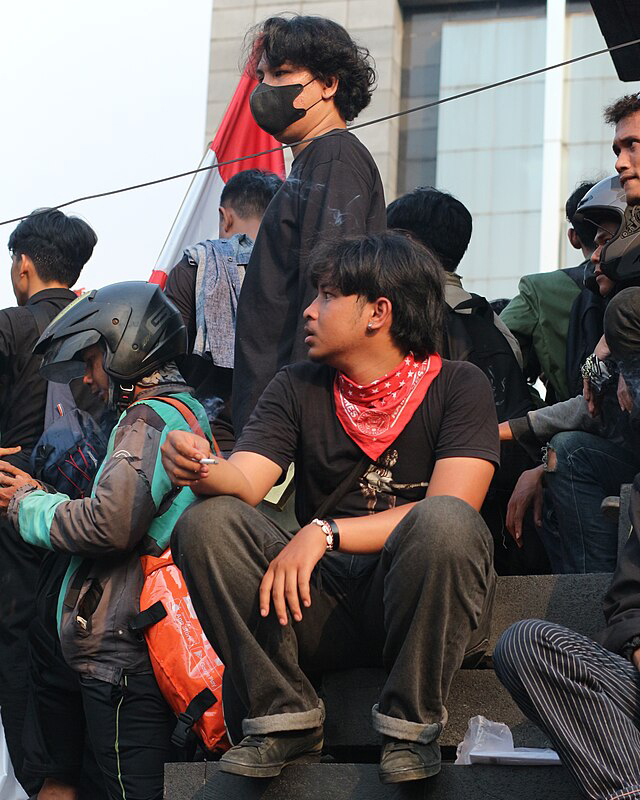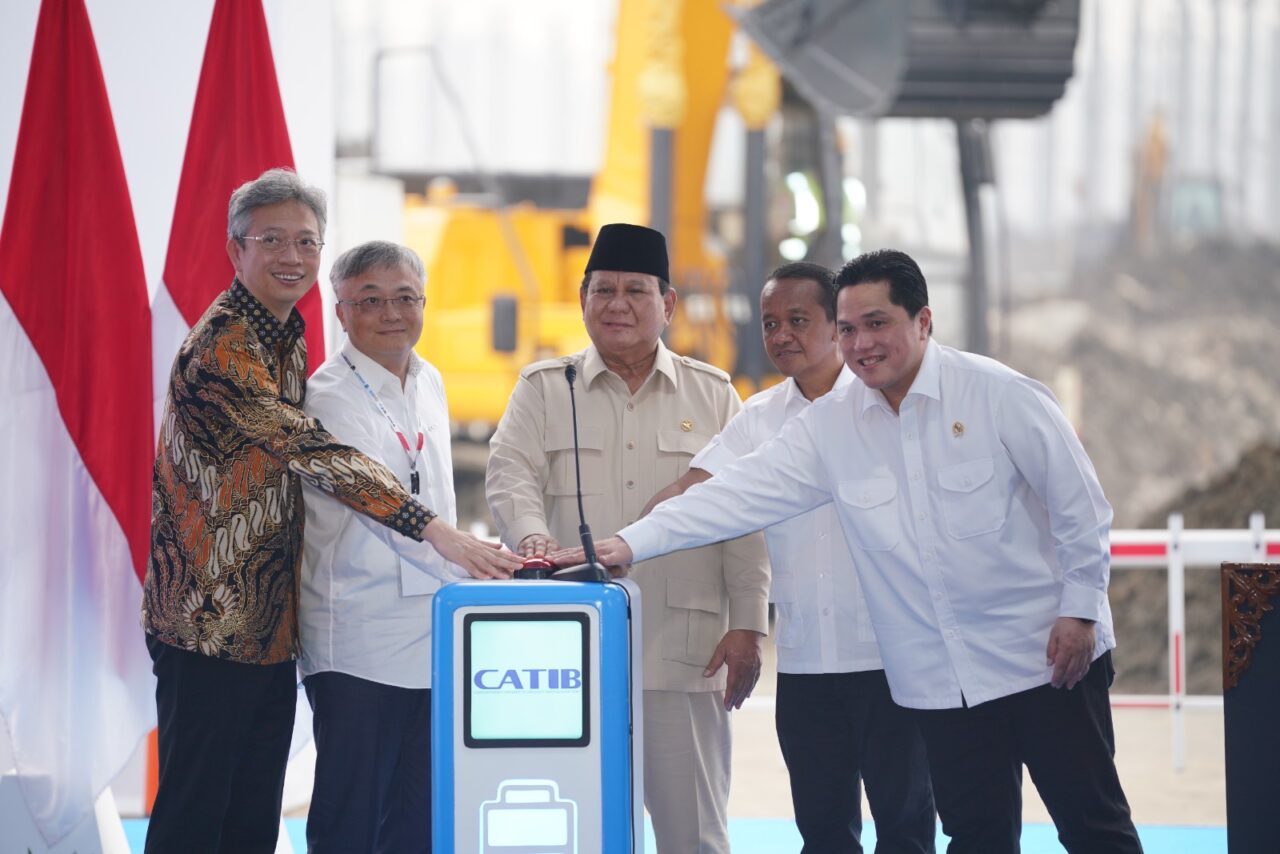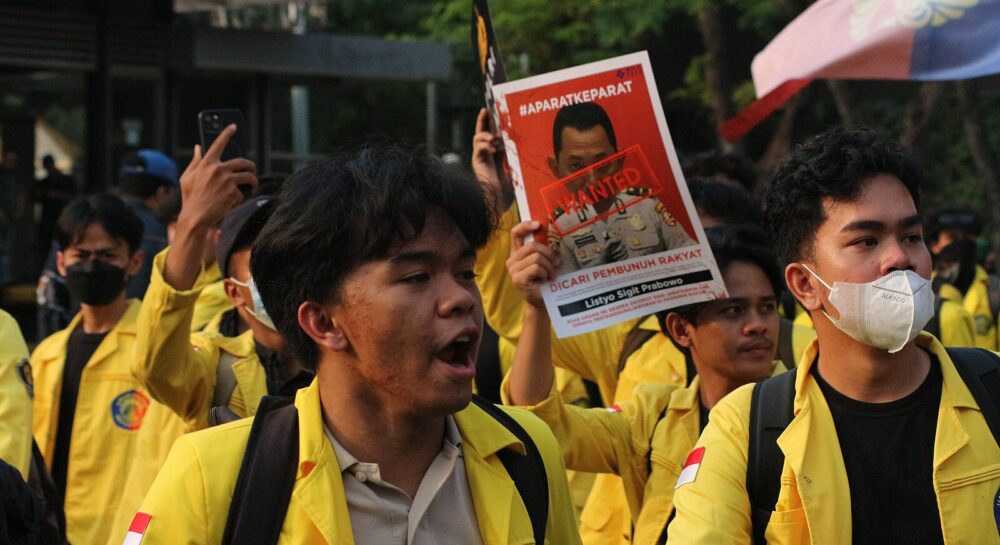Indonesia is changing fast, and tensions are rising. Abe David argues that understanding Indonesia’s contradictions is not optional. For Marxists in Australia, it is essential.
Standing at the centre of Southeast Asia’s shifting political economy, Indonesia is in flux. With a population of 280 million and a median age just over 30, the archipelago nation is a society where the economic and social expectations of the masses are rising rapidly.
Its “cyber kids” generation, tied into global networks through smartphones, international job opportunities and digital media, is demanding improved living standards and opportunities. Yet the political and economic structures are struggling to keep pace, and the protests of August 2025 show that putting up with the status quo is becoming impossible for many Indonesians.
For Marxists in Australia, Indonesia must be understood not simply as a neighbour, it is a critical node in the evolving regional order that is reshaping global capitalism beyond the confines of the “Anglosphere” and the old imperialist core.
Integration with North Asian capital
The old Dutch colonial model, based on raw resource extraction, has been upended. Indonesia is now refining and smelting nickel, copper and bauxite domestically. These minerals underpin the growing battery and car industries, which are increasingly tied into North Asian capital flows from China, Korea, Taiwan and Japan. This not only represents a break with the old colonial model of resource extraction, but a break from the later US and European model of mineral exports.
Yet while these industries boost GDP growth, they are capital-intensive rather than labour-intensive. After initial construction phases, they generate limited jobs, leaving millions of young Indonesians without stable employment.
Historic job-creating sectors like textiles and light manufacturing are squeezed by Vietnam, Bangladesh and increasingly by African nations. Meanwhile, automation – driven by AI – undercuts labour demand across manufacturing and in the service sector, such as call centres.
On top of this, Western economies, led by the US, have turned increasingly protectionist, further limiting Indonesia’s industrial ambitions. After an initial threat of 32 percent tariffs on exports to the US, the Trump administration dropped these to 19 percent after Prabowo promised to spend $US15 billion on US energy, $US4.5 billion on US agricultural products and purchase 50 Boeing aircraft, quickly becoming the ‘second choice’ after the EU’s Airbus offering.
The results of these tariffs could be to accelerate Jakarta’s economic integration with North Asian capital, which has been witness to increased coordination between Seoul, Tokyo and Beijing, despite the Anglosphere rhetoric about the ‘China threat’.
Urbanisation: strain and discontent
Jakarta is now a megacity of more than 11 million people with the broader metropolitan zone more like 32 million, highlighting the explosive urbanisation driven by internal rural migration. This has put a huge strain on urban infrastructure and services. To alleviate this, much investment has come via North Asian capital – the Jakarta–Bandung high-speed rail (China) and the Jakarta subway (Japan). These projects are essential but also reveal Indonesia’s dependence on external finance.
Nonetheless, government priorities are skewed and shifting under the new president. The new capital city project in Nusantara, Borneo, and President Prabowo’s costly school lunch program have sparked discontent. Meanwhile, corruption remains endemic, even if decentralised compared to the Suharto years. Politicians’ perks, including housing allowances, helped ignite the August protests.
These were a manifestation of these frustrations boiling over. Anger first erupted after parliament approved a major increase in housing subsidies for MPs – lavish benefits granted while millions of ordinary Indonesians faced rising food, rent and energy costs. The outrage intensified when police killed Affan Kurniawan, a 21-year-old motorcycle taxi (ojek) driver and father of two, during a protest in Jakarta. His death became a rallying point, symbolising the brutality of a state that protects privilege while suppressing dissent.

Led by young workers, students and Jakarta’s urban poor, the protests quickly grew into mass mobilisations against corruption, economic inequality and elite impunity. For the first time in years, a generation raised in the digital age is openly confronting the contradictions of Indonesian capitalism.
The Prabowo government is feeling the strain and this month has announced a $US2 billion stimulus aimed at meeting the growing expectations of this emerging generation and a flagging economy. This comes on top of a $US4.5 billion stimulus announced last December.
Labour export, remittance and surplus
With capital-intensive industrialisation failing to absorb labour, Indonesia turns to exporting its people. In 2025, the official target is 425,000 workers to be sent abroad, with around 5 million already (legally) working overseas. The real number is likely much higher.
Remittances are projected at $US18.2 billion, about 1.2 percent of GDP. This export of surplus labour has helped reduce unemployment this year by 4 percentage points, down from 7.47 million in 2024.
Destinations range from Malaysia and Saudi Arabia to Korea, Hong Kong, and Taiwan, with women heavily represented in domestic and healthcare sectors. A recent agreement with China’s CATL battery conglomerate to build a university training centre for renewable energy reflects how skill development is increasingly shaped by foreign capital’s needs rather than domestic social demands.
The centre is designed to train workers across the entire value chain from mineral exploration and mining, through advanced mineral processing and battery manufacturing, to recycling and circular economy practices.
However, this investment also suits elements of the Indonesian ruling elite. The deal with CATL requires skills transfer and manufacturing infrastructure within country. And this is shaping much of the deal-making between Jakarta and North Asian capital.

Central to Indonesia’s future is who controls and benefits from economic surplus. President Prabowo’s National Development Fund is billed as a sovereign wealth vehicle to channel resource revenues into infrastructure, green energy, digital industries and industrial upgrading. The state claims it will reduce reliance on foreign loans and foster self-sufficiency, but whether this breaks with entrenched crony-capitalist networks or simply sustains them is a pressing question.
Military networks, political elites and powerful Sino-Indonesian family conglomerates still dominate, with the top 20 firms on the Indonesian Stock Exchange, with between 60 and 70 percent of market capitalisation controlled by such families. While decentralisation has broadened corruption beyond the Suharto clan, it has not eliminated it.
Indonesia is caught between two models: the corrupt developmentalism of Suharto’s New Order and the less corrupt state-driven industrial policies of Japan, Korea and China. Which way it leans will shape the nation’s trajectory.
Historical continuities
Indonesia’s present cannot be separated from its past: 350 years of Dutch colonialism, wartime Japanese occupation, decades of US dominance through Suharto, and the brutal annihilation of the Communist Party and the left in 1965. That Cold War victory for US imperialism allowed the regime to open Indonesia’s resources to global capital and decapitated progressive movements for a generation.
Yet history also provides alternative visions. Pre-colonial trade linked Indonesia with India, Arabia and China in cooperative commercial networks before European conquest imposed a system of extraction and hierarchy. Today, ASEAN is once again integrating more closely with Asian trade partners, reflecting both continuity and contradiction.
In that sense, pre-colonial structures and networks are re-emerging as the West recedes in influence, however they are of a decidedly modern and capitalist nature.
Underlying this is the foundational Indonesian nationalist ideology of Pancasila, an echo of the Sukharno era. This philosophical concept, embedded in the Indonesian constitution, means the ruling elite must accept some differences within Indonesia. While drawing on elements of Islam, it is essentially a secular glue holding together a disparate population of multiple ethnicities and loyalties across the vast archipelago.
Australian imperialism’s blindspot
For Australia, Indonesia is unavoidable. It imports beef, wheat, coal, gas and lithium from Australia, while increasingly exporting batteries, cars, electronics, palm oil and of course tourism back across the Timor Sea. Indonesian conglomerates such as Salim, Sinar Mas and Lippo hold major assets in Australia, while Japanese firms use Australia to supply into Indonesian markets, particularly food and energy.
Under Indonesia-Australia Comprehensive Economic Partnership Agreement (IA-CEPA), Indonesian workers now come to Australia under expanded visa quotas, though inequities remain. Australians get visas on arrival in Indonesia, while Indonesians face obstacles securing tourist visas. Indonesians also note the preferential treatment given to European backpackers over their own youth. Australia is expanding TAFE and other training institutions in Indonesia for construction, health, aged care, tourism and transport.
However, for two decades, Australian capital largely disinvested from Indonesia and the rest of Southeast Asia, preferring the “comfort zone” of Anglosphere markets. Yet geography is stubborn. With 280 million people next door, Australia cannot afford to neglect Indonesia’s complexity, contradictions, and opportunities.
Our future is in Asia, not against it
With the capitalist class in Australia clinging conservatively to the past, best displayed by the madness of the AUKUS agreement, it will be up to the workers’ movement to engage in solidarity and cooperation with Indonesia, in joint campaigns that strengthen workers in both countries to challenge our ruling classes.
There are warning bells ringing. Indonesia is not simply “catching up” with the West. It is developing in its own way, with uneven growth shaped by colonial legacies, rural immigration, labour export, North Asian capital, and its youthful and increasingly international labour force. This dynamism – outside the Anglosphere and core imperialist centres – makes Indonesia essential for Marxists in Australia to not only study but engage with politically.
The August 2025 protests remind us that beneath the statistics and investment flows lies a restless population unwilling to quietly bear the burdens of elite impunity. The future of global capitalism in our region – and the struggles against it – will not only be determined in Washington or London, but increasingly in Jakarta, Beijing and across Asia.
Understanding Indonesia’s contradictions is not optional. For Marxists in Australia, it is essential.
References
- Antara News, Government targets to send 425,000 migrant workers abroad in 2025
- UN in Indonesia, Migration Governance & Sustainable Development – Key Results
- BNI, Remittance Business Growth Q1 2025
- Statista, Remittances – Indonesia
- Trading Economics, Remittance inflows to GDP (World Bank Data)
- ScienceDirect, Chinese-Indonesian family networks in business
- Austrade, Indonesia–Australia Comprehensive Economic Partnership Agreement

